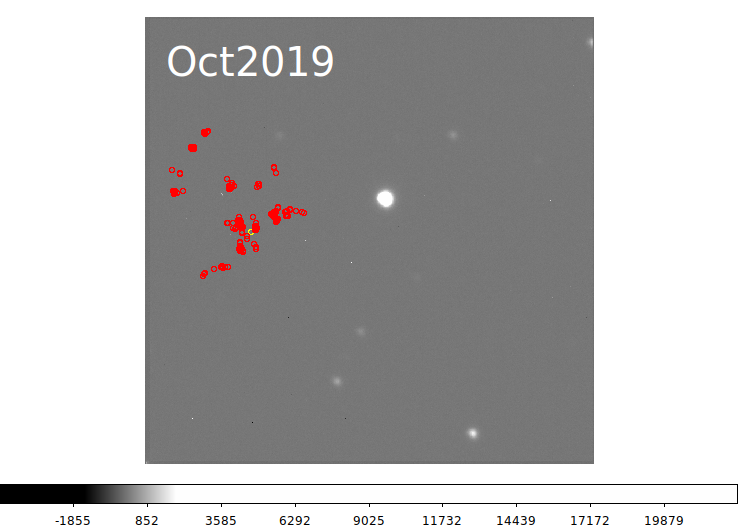 |
| I have taken 229 acm images with well calibrated WCS (rms residuals of a few 0.1 arcsec uisng usually at least a dozen stars) and compared their astromerty to that from the original acm image. First I have taken the CRPIX1,CRPIX2 of the old images and plotted them as yellow circles on a random acm image. This is one point in the attached plot since the headers all use X,Y=185,399 (very close to our current acm position for the IHMP center in the wiki). Next, I took the CRVAL1,CRVAL2 (ra,dec) from the old header, and used them to predict the X,Y on the newly (i.e. correctly) calibrated images using the wcstools routine sky2xy. If the original images had good WCS, we'd just get back values around X,Y=185,399. These new X,Y predictions are plotted as red circles in my attached figure. They do cluster roughly near our standard IHMP position (certianly not an image corner or the image center). I roughly drew in the green circle to characterise the sactter of the newly predicted X,Y. The diameter of this cricle is about 80" and the center is about X,Y=144,460 (acm pixels). If you look closely you will notice that many of the points fall into little clumps. This is becasue I have gathered the images into pointinsg on the sky. These gropus are usually 5 or 6 images each, but can be as few as 1 (for the final HPF acm images) or as high as 23 (for long setups?). I suspect that the telescope transformation to predict CRVAL1,CRVAL2 for each acm image is changing slightly with tracker position and this gives us the small clumps of points. Hence, there appears to be no fundamental error in the way CRPIX1,CRPIX2 is set. That is what we were hoping for. I have several hundred images from older reductions that I'll be doing this same analysis on. Maybe some trend with structure azimuth or the like will emerge and help us tighten the scatter. |